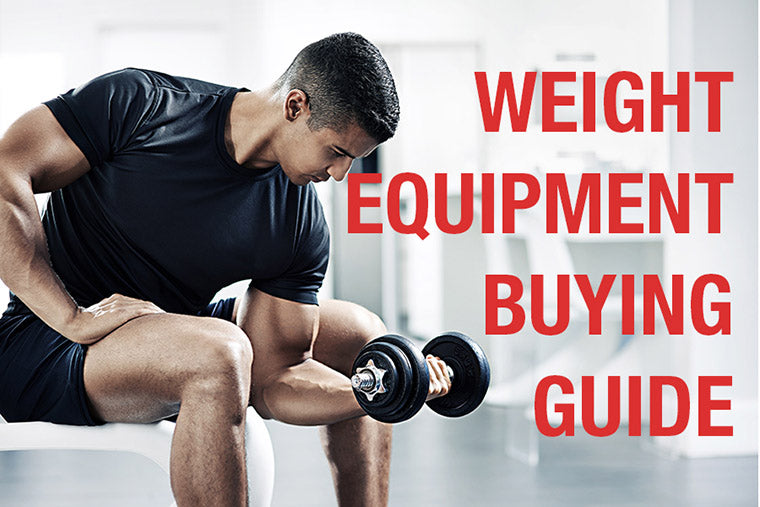
Weightlifting Equipment: A Buyer’s Guide to Building Your Ideal Home Gym
For many, the pursuit of fitness transcends the confines of a commercial gym. The convenience, privacy, and personalized atmosphere of a home gym offer unparalleled advantages. However, building a functional and safe home weightlifting setup requires careful planning and informed purchasing decisions. This comprehensive guide will equip you with the knowledge to navigate the world of weightlifting equipment, helping you build your dream home gym without breaking the bank or compromising safety.
I. Assessing Your Needs and Budget:
Before diving into the exciting world of barbells, dumbbells, and power racks, it’s crucial to define your fitness goals and budget. Honest self-assessment is key. Are you a seasoned weightlifter looking to replicate a gym experience, or a beginner starting your fitness journey? Your training style significantly impacts equipment choices.
-
Training Style: Do you prefer bodybuilding, powerlifting, strongman training, or a combination? Bodybuilding might focus on dumbbells and isolation exercises, while powerlifting prioritizes barbells and compound movements. Strongman training necessitates specialized equipment like atlas stones and strongman bars.
-
Space Constraints: Measure your available space meticulously. A small apartment necessitates compact equipment, while a larger area allows for more extensive setups. Consider the room’s ceiling height, especially for overhead presses and pull-ups.
-
Budget: Set a realistic budget and stick to it. Weightlifting equipment can range from affordable to exorbitantly expensive. Prioritize essential items initially and gradually expand your collection as your budget allows. Consider purchasing used equipment to save costs, but thoroughly inspect its condition for safety.
II. Essential Weightlifting Equipment:
A well-rounded home gym requires a strategic mix of equipment. Prioritizing the essentials ensures a safe and effective workout routine.
-
Barbell: The cornerstone of weightlifting, a barbell is essential for compound exercises like squats, deadlifts, and bench presses. Consider the barbell’s weight capacity, diameter (Olympic bars are 2 inches), and material (steel is preferred for durability). Olympic bars are typically 45 lbs, while lighter options are available for beginners.
-
Weight Plates: Choose plates compatible with your barbell’s diameter (Olympic or standard). Start with a range of weights to accommodate your strength level, gradually adding more as you progress. Consider bumper plates for dropped sets to protect your floor and equipment.
-
Dumbbells: Dumbbells offer versatility for isolation and compound exercises, accommodating different muscle groups and training styles. Adjustable dumbbells are space-saving and cost-effective, while fixed-weight dumbbells offer a more traditional feel.
-
Power Rack/Squat Stand: Essential for safe barbell exercises like squats, bench presses, and overhead presses. A power rack provides safety bars to prevent injury during failed reps. Squat stands offer a more compact alternative but lack the safety features of a power rack.
-
Weight Bench: A sturdy and adjustable weight bench is crucial for bench presses, incline presses, and other exercises. Consider features like adjustable incline/decline settings, padding comfort, and overall stability.
-
Pull-up Bar: An excellent addition for back and bicep workouts. Doorway pull-up bars are space-saving options, while dedicated wall-mounted or freestanding pull-up bars offer greater stability.
III. Optional but Highly Recommended Equipment:
Once you’ve established the essentials, you can expand your home gym with additional equipment to enhance your training.
-
Olympic Weightlifting Platform: Protects your floor from damage caused by dropped weights and provides a stable surface for your lifts. It’s crucial if you’re serious about weightlifting and regularly perform heavy lifts.
-
Bench Press Spotter Arms: Enhance safety during bench presses by providing a secure spot for assistance if needed.
-
Resistance Bands: Offer a versatile addition for warm-ups, assisted exercises, and isolation movements. They are lightweight, compact, and easily stored.
-
Kettlebells: Provide a dynamic workout, improving strength, power, and cardiovascular fitness. Choose from various weights to challenge yourself.
-
Gym Flooring: Protects your floor from damage and provides a comfortable surface for workouts. Consider rubber mats or interlocking tiles for durability and sound absorption.
-
Adjustable Bench: A more advanced option offering a wider range of incline and decline adjustments, providing versatility in your training.
IV. Factors to Consider When Buying:
-
Durability: Invest in high-quality equipment constructed from durable materials like steel and reinforced plastics. Cheap equipment often compromises safety and longevity.
-
Safety Features: Prioritize equipment with safety mechanisms like spotter arms, safety bars, and stable bases. Always prioritize safety over cost.
-
Warranty: Check the warranty offered by the manufacturer. A good warranty indicates confidence in the product’s quality.
-
Reviews: Read online reviews from other users before purchasing equipment. Real-world experiences provide valuable insights into product performance and durability.
-
Brand Reputation: Research established brands with a reputation for quality and customer service. Avoid unknown brands that may lack reliability and safety standards.
V. Where to Buy Weightlifting Equipment:
-
Online Retailers: Offer a wide selection of equipment at competitive prices. However, shipping costs and potential damage during transit should be considered.
-
Sporting Goods Stores: Provide the opportunity to physically examine equipment before purchasing. However, selection may be limited and prices may be higher.
-
Used Equipment Marketplaces: Offer a cost-effective way to purchase used equipment. However, thoroughly inspect the condition and ensure safety before purchasing.
VI. Maintaining Your Equipment:
Regular maintenance is crucial to prolong the lifespan of your equipment and ensure its safety.
-
Cleaning: Clean your equipment regularly with a damp cloth to remove sweat and dirt.
-
Lubrication: Lubricate moving parts such as hinges and joints to prevent rust and ensure smooth operation.
-
Inspection: Regularly inspect your equipment for signs of wear and tear, replacing damaged parts as needed.
Building a home gym is a rewarding investment in your health and fitness. By following these tips and carefully considering your needs, budget, and safety, you can create a functional and effective weightlifting space that will serve you for years to come. Remember, a well-planned and maintained home gym is a testament to your commitment to a healthier and stronger lifestyle.



